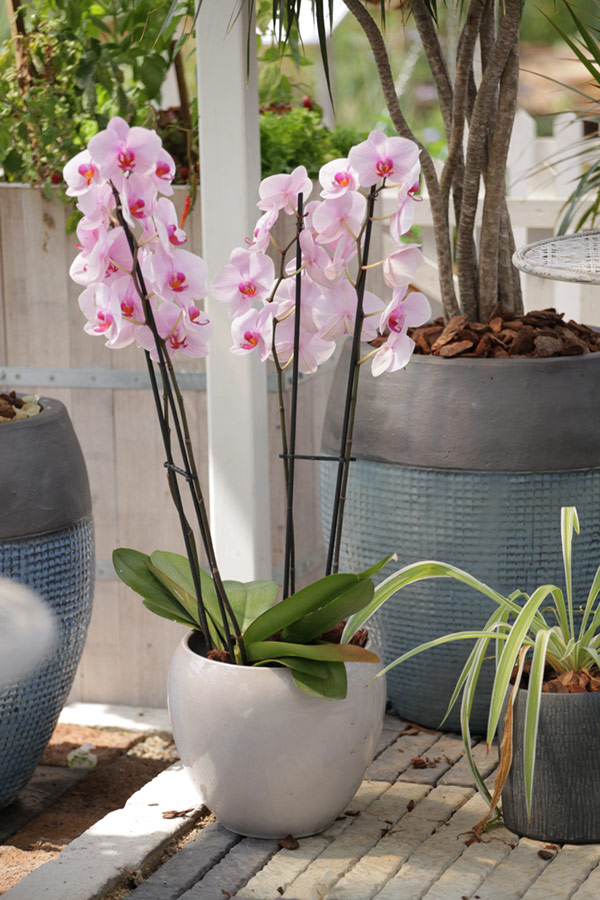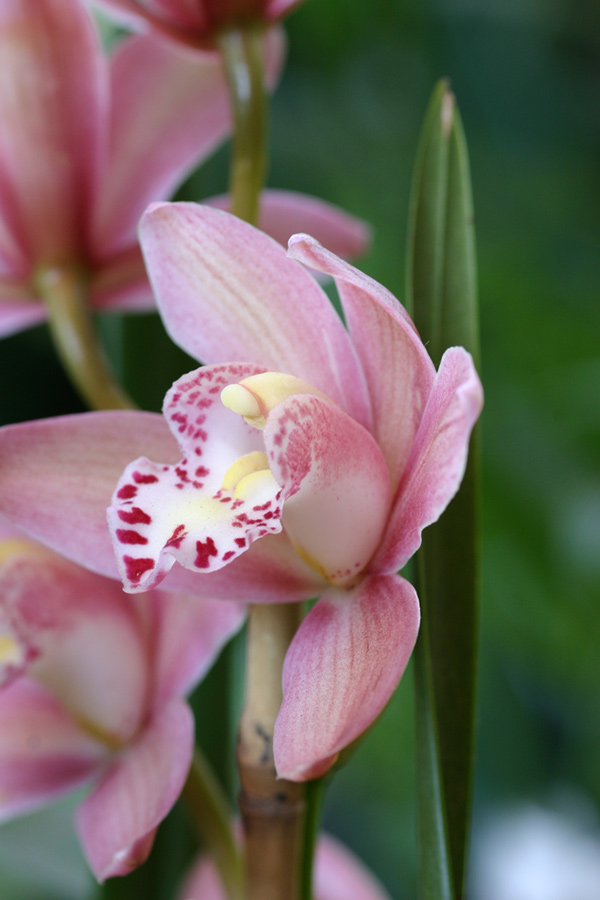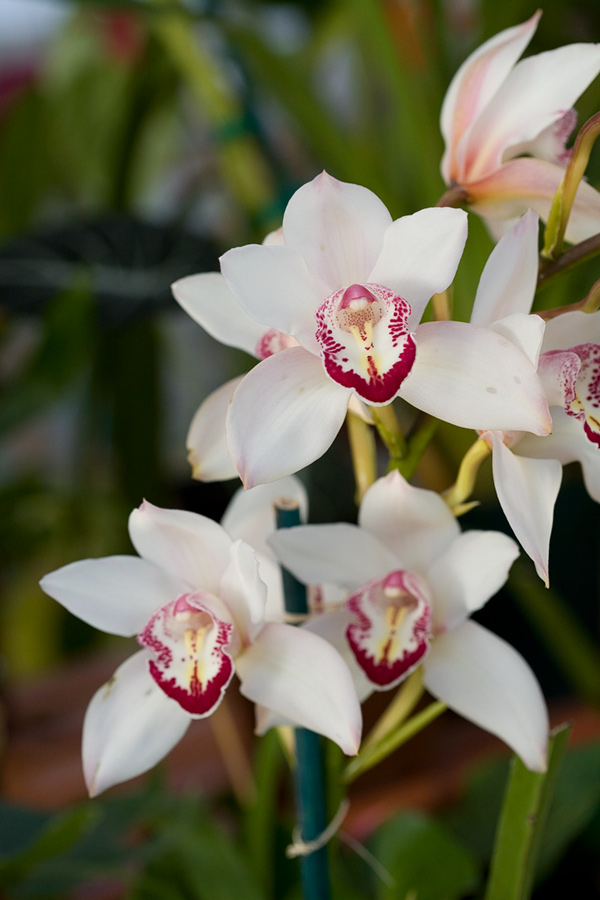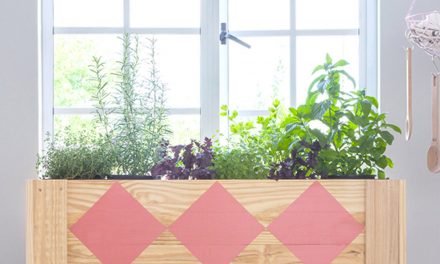Air out your orchids by repotting them.
Spring is the best time to re-pot orchids because the warmer weather and longer days will initiate new growth.
First things first though, let’s decide which orchids benefit from re-potting at this time of year because, just like us, not all orchids appreciate moving home!
Cymbidium species will just have finished flowering and with their new growths emerging they will respond well to fresh open compost at this time of year.
Phalaenopsis spp. (moth orchids) too, will benefit from the warmth and sprout new, fleshy roots.
Cattleya spp. will have pushed out their new growths during the winter from which new white roots will be emerging .This is exactly the right time to re-pot these elegant beauties.
If you have any doubts or fears about re-potting your orchids then pay a visit to the garden centre where you bought them and ask for advice.
Re-potting step-by-step
- To remove the plant from the pot invert the plant and gently tap off the pot so that the plant remains in one hand and the pot comes off freely in the other.
- Orchids like to be root bound or have a pot of matted roots. If the root ball is intact simply use a clean pot that is only about 2cm bigger than the old one. If you have to remove some of the roots then use a clean pot of the same size as the existing one.
- Place the plant in the pot and fill in around it with fresh damp compost. Ideally the compost should be made up of bark and perlite.
- If the roots are rotted or decaying it is important to untangle them first.
- Remove any damaged or rotten root matter by snipping it off with clean secateurs before re-potting the plant.

Tips
- Often rock wool has been used as a growing medium. This does not need to be removed. Simply pot on in either rock wool or bark-based compost.
- If you use a plastic pot it may be necessary to add some crock or broken bricks to ensure good drainage and to weight the plant down and avoid it falling over if it is in a breezy position. Terracotta pots are popular but expensive, and usually have to be broken when re-potting. Plastic pots are ideal, inexpensive and easily cleaned with household disinfectant.
- Once re-potted, do not water the plant for about two weeks as this will encourage the emerging roots to infiltrate the fresh compost in their search for water. From then on, water once a week during spring, twice weekly in the summer months, and reduce watering as autumn approaches.

Feeding your orchids
Spring
Use a high nitrogen fertiliser (30:10:10) to encourage new growth.
Summer
Use a general fertiliser (18:18:18) at half the recommended strength.
Autumn
Use a high pot ash fertiliser (10:30:20) to ‘harden’ and prepare the plants for winter. This, together with the drop in night temperature, will also encourage blooming.

Read all about it
Treat yourself to a copy of Michael Tibb’s book Orchids – a simple guide. It contains a whole section about re-potting, along with detailed images of the process.










